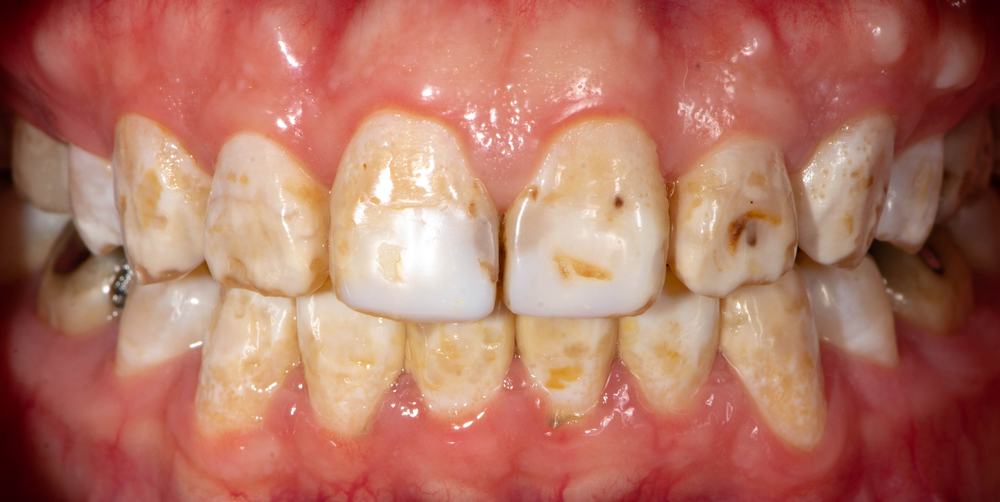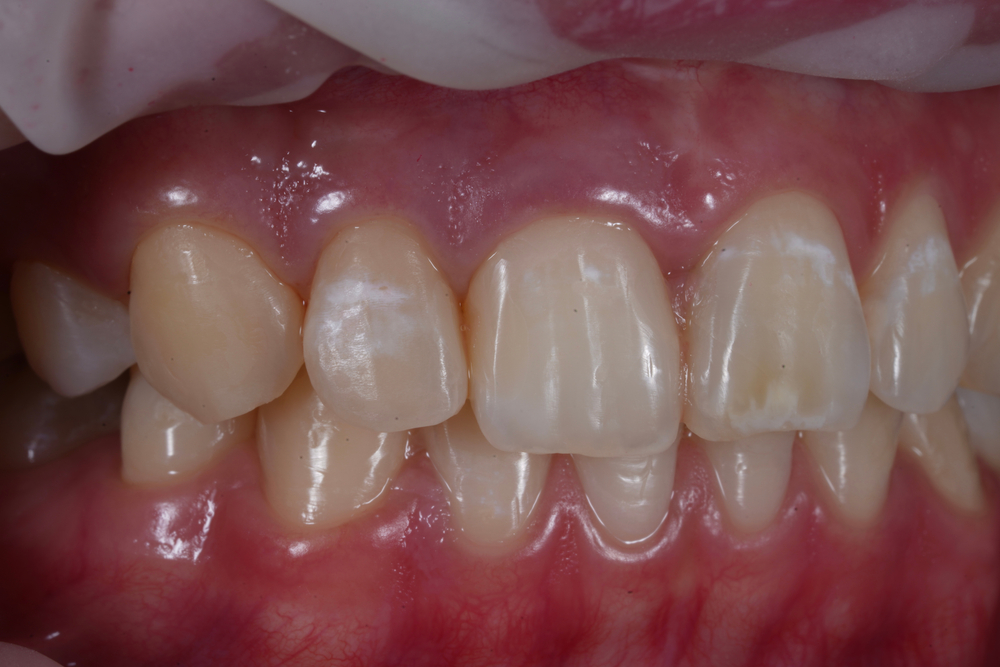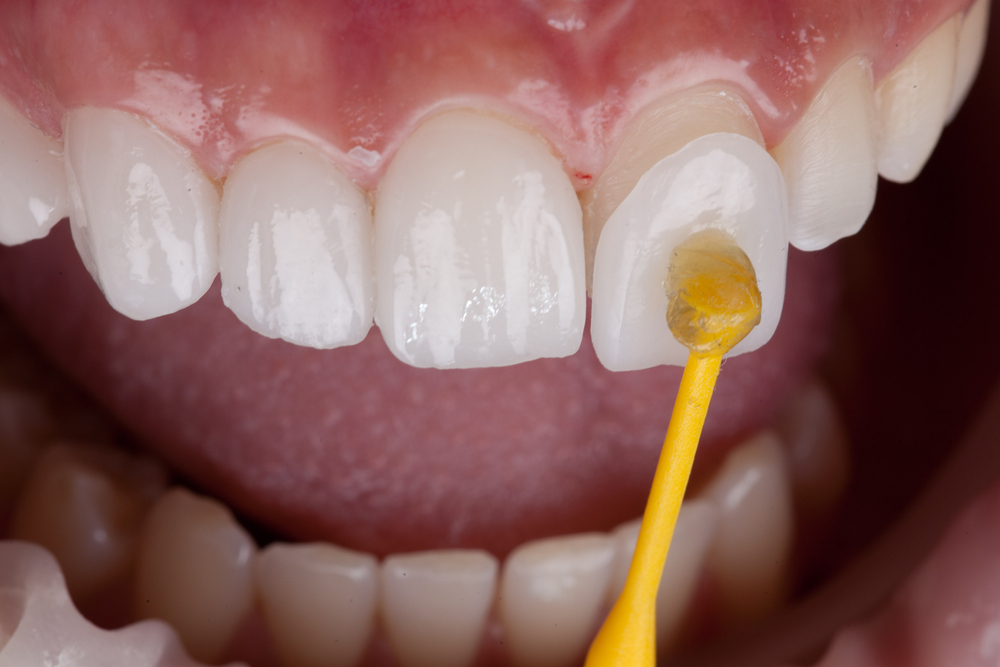In the vast realm of dental health, few topics have been as polarizing and subjected to as much speculation as fluoride. As the digital age progresses, access to information becomes both a blessing and a curse. A simple online search about fluoride can yield a slew of contrasting opinions, ranging from it being hailed as a dental savior to being demonized as a hidden poison.
The Rise of Fluoride Myths

It’s not difficult to stumble upon alarming headlines about fluoride, particularly in recent years. Terms like “the great lie” or claims about the “collusion of pharmaceutical companies” have, unfortunately, found a receptive audience. The surge of fluoride-free toothpaste in the market only adds fuel to the growing skepticism. But are these doubts grounded in scientific reality, or are they just part of the misinformation maelstrom that sometimes engulfs the internet?
The Mission of Smile Science Dental Spa
At Smile Science Dental Spa in Glendale, AZ, our commitment extends beyond providing top-notch dental care. Dr. Richard Dawson and Dr. John Turke are steadfast in their mission to enlighten the community, debunk myths, and present the facts. Our practice believes in grounding all our services and advice in scientific research, ensuring that our patients make informed decisions about their dental health.
Tracing the History of Fluoride Usage
The relationship between fluoride and dental health is not a recent discovery. Its integration into medical and dental practices has been a product of careful observation, research, and years of validation.
Early Adoption in the 1940s
The 1940s marked a significant turning point. Developed nations began to recognize the potential of fluoride in preventing dental caries, leading to its incorporation in water sources and medical products. This period heralded a new era of preventive dental care, where the focus shifted from treatment to proactive measures.
The Two-sided Coin: Benefits and Potential Overexposure

Like any substance, the benefits of fluoride come hand-in-hand with potential risks if not administered judiciously. When combined with naturally occurring fluoride in our diets from food, beverages, and even the air, it’s possible to tip the balance towards overexposure. This can lead to conditions like dental and bone fluorosis, irreversible diseases that manifest due to excessive fluoride consumption. It’s this very balance that underscores the importance of monitored and controlled fluoride use. The challenge lies in leveraging fluoride’s protective benefits while safeguarding against its potential hazards.
The Global Challenge of Dental Caries
In today’s interconnected world, dental health remains a universal concern, transcending borders and cultures. A prime example of this global challenge is dental caries, an issue that afflicts countless individuals, both young and old. However, the narrative isn’t uniformly grim, as strides have been made in combating this widespread issue.
Worldwide Prevalence of Primary Teeth Caries
Dental caries, particularly in primary teeth, casts a long shadow over global dental health. An astonishing 530 million cases of primary teeth caries are reported globally, highlighting the sheer magnitude of the challenge. While a myriad of factors contribute to this problem, from dietary habits to genetic predispositions, it’s clear that preventive measures are desperately needed.
The Role of Fluoride in Caries Prevention
Enter fluoride: a proven ally in the battle against caries. Its effectiveness isn’t just anecdotal; countless studies have underscored its importance in fortifying teeth against decay. When administered appropriately, fluoride acts as a shield, significantly reducing the risk of caries and promoting overall dental health, especially in children.
Scientific Evidence Supporting Fluoridation

As with any medical or dental intervention, the use of fluoride is most effective when grounded in rigorous scientific research. Over the years, numerous studies have delved deep into the impact of fluoride, assessing its benefits and potential risks.
Reduction in Caries Through Fluoridated Water and Agents
The positive impact of fluoridated water on dental health is undeniable. Comprehensive studies, such as the one by Iheozor-Ejiofor et al., have indicated a notable reduction in caries—35% in milk teeth and 26% in permanent teeth among children. This reduction isn’t just restricted to water. Various fluoride-containing agents, when used appropriately, contribute significantly to this decline in caries rates.
The Effectiveness of Fluoride in Different Global Settings
Interestingly, the benefits of fluoride aren’t uniformly distributed across the globe. In less developed regions, where access to fluoride toothpastes and stringent hygiene standards might be limited, the impact of fluoridated water is even more pronounced. It serves as a testament to fluoride’s potential, especially in areas where dental care resources might be scarce.
Dental Materials with Fluoride: A Preventive Measure in Dental Offices
At the heart of any dental practice is the quest for prevention, and fluoride plays a pivotal role in this mission. Dental materials imbued with fluoride ions have found favor in many offices, including ours at Smile Science Dental Spa. Their ability to reduce the chances of secondary caries or halt its progression makes them invaluable. It’s not just about immediate treatment; it’s about long-term preventive care, and fluoride stands tall as a crucial component in this endeavor.
Unraveling Myths: Fluoride and IQ Levels

In the age of the internet, where information—both accurate and misleading—flows freely, myths and misconceptions can easily gain traction. One such contentious topic that has sparked considerable debate is the purported link between fluoride and lowered IQ levels in children. It’s crucial to dissect this claim and understand the nuances behind the available data.
Studies Linking Fluoride with Lowered IQ: A Deeper Look
In the vast landscape of scientific research, several studies have pointed towards a correlation between high fluoride levels in water and decreased IQ scores among children. These studies have naturally raised eyebrows and caused concerns. However, it’s imperative to understand the breadth and depth of these findings, as well as the limitations that come with them.
The Missing Data: Other Sources of Fluoride
A critical limitation in many of these studies is the exclusive focus on fluoride content in water, often overlooking other significant sources of fluoride. Dental preparations, food, and drinks can all contribute to one’s fluoride intake, complicating the task of determining the exact dose consumed by individuals. By not accounting for these variables, the conclusions of these studies might not paint a complete picture.
Breastfeeding as a Mitigating Factor
Another illuminating piece of the puzzle is the observation regarding breastfed children. Even in regions with high fluoride water content, breastfed children didn’t showcase elevated fluoride intake through their milk. This finding further complicates the direct correlation between fluoride in water and lowered IQ, hinting at other factors at play.
Diverse Sources of Fluoride: Beyond Tap Water

Fluoride, often synonymous with tap water in many discussions, is present in various sources, some of which might surprise many. Recognizing and understanding these sources is paramount in managing and optimizing fluoride intake.
Natural Sources: Food, Drink, and Daily Consumption
Our daily diet introduces us to a spectrum of fluoride sources. Freshwater, seafood, meats, and even our morning coffee or tea can have varying fluoride concentrations. For instance, while freshwater might contain between 0.5–40 mg F/L, bottled tea can range from 1.79–803.94 mg/L, showcasing the diversity of fluoride levels in commonly consumed items.
Cultural Traditions: The Significant Fluoride Intake through Tea
Dietary habits molded by cultural traditions play a significant role in fluoride intake. Tea, a staple beverage in many cultures, can be a major source of fluoride, especially when prepared with tap water. The cultural significance of tea-drinking, combined with the type of water used, can lead to substantial fluoride consumption, underlining the need to consider cultural practices when discussing fluoride intake.
Fluoride in Oral Care Products

Oral care products are a primary source of fluoride for many, designed to boost dental health by preventing tooth decay and strengthening enamel. With various products available on the market, it’s essential to recognize their fluoride content and how they function.
Toothpaste, Varnish, Foams, and Gels
The familiar stripe of toothpaste on our brushes is just one way fluoride makes its way into our oral care routine. Other products, like fluoride varnishes, foams, and gels, are also incorporated, especially in professional dental settings like Smile Science Dental Spa. These products are designed for different purposes, ranging from daily hygiene maintenance to targeted treatments in a dentist’s office.
Comparative Fluoride Content: What You Need to Know
While all these products contain fluoride, the concentrations vary. For instance, adult toothpaste can range from 1450-5000 mg F/kg, while fluoride varnishes can be as concentrated as 22,600 mg F/L. Foams and gels, on the other hand, have fluoride contents that can range between 5000-12,500 mg F/kg. Recognizing these differences is crucial when considering total fluoride exposure, especially when combined with other dietary sources.
Recognizing the Dangers of Overexposure

While fluoride offers many benefits, like all things, it’s a matter of balance. Overexposure or excessive intake can lead to specific health concerns, emphasizing the need for awareness and monitoring.
The Irreversible Impact of Dental and Bone Fluorosis
Excessive fluoride intake, especially during the years when teeth are developing, can lead to dental fluorosis. This condition, characterized by discoloration and pitting of teeth, is cosmetic in nature but can be distressing. More severe is skeletal fluorosis, impacting bones and joints, which can be debilitating.
The WHO’s Emphasis on Monitoring Fluoride Consumption
Understanding the potential risks of overexposure, the World Health Organization (WHO) places great emphasis on controlling fluoride intake. With a primary focus on children, the WHO guidelines stress the importance of monitoring to ensure fluoride’s benefits are harnessed without inadvertently leading to adverse effects. For practices like Smile Science Dental Spa, this means an ongoing commitment to patient education, ensuring that individuals are informed about their fluoride sources and the importance of moderation.
Navigating Misinformation in the Digital Age

As the digital era blossoms, it has become increasingly easier for information—both accurate and misleading—to spread at lightning speed. The realm of dental health is no exception, with misconceptions about fluoride being especially prevalent.
The Challenges Posed by the Internet
The internet, with its easy accessibility and vast reach, has transformed how we consume information. Platforms, where anyone can be a content creator, have become breeding grounds for myths, misleading statements, and sometimes outright false claims. “The great lie” and “collusion of pharmaceutical companies” are just a couple of catchy slogans that encapsulate the spread of misinformation about fluoride.
Sifting Through False Information to Find Scientific Evidence
For the average person, distinguishing between fact and fiction online can be daunting. However, turning to reputable sources, peer-reviewed studies, and professional insights can make a world of difference. It’s essential to remember that catchy headlines and viral posts don’t always equate to truth. Scientific evidence, like the studies mentioned throughout this article, provides a much more accurate and reliable foundation upon which to base our understanding of fluoride’s role in dental health.
Conclusion: Embracing the Balanced Approach to Fluoride

Fluoride, while contentious in some circles, remains a cornerstone in dental health. Its advantages, when used judiciously, are well-documented and significant. However, like all elements, it requires balance.
The Commitment of Smile Science Dental Spa to Patient Education
At Smile Science Dental Spa, under the guidance of Dr. Richard Dawson and Dr. John Turke, we believe in equipping our patients with accurate, evidence-based information. We understand the challenges posed by misinformation and are dedicated to ensuring our community in Glendale, AZ, is well-informed about the benefits and potential risks of fluoride.
The Importance of Individualized Fluoride Prophylaxis
Every patient is unique. Their fluoride needs, exposure, and risks may vary based on various factors, from diet to daily oral care habits. Recognizing this, we advocate for individualized fluoride prophylaxis—a targeted approach to ensure each patient receives the fluoride they need, in the manner best suited for them, without overexposure.
In the face of swirling myths and widespread misconceptions, a balanced, science-backed perspective on fluoride is more crucial than ever. As we move forward, let’s embrace this balanced approach, prioritizing patient education and individualized care.
Further Reading
This article is the final of four articles in our Fluoride Series. It was adapted and written from the following article, published in Materials in February, 2023:
The Safety of Fluoride Compounds and Their Effect on the Human Body—A Narrative Review






